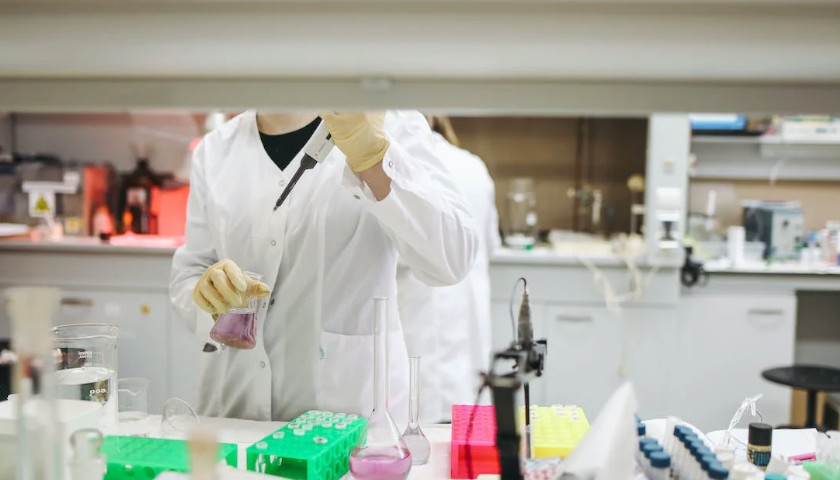by Debra Heine
Boston University scientists have reportedly created a lethal new COVID strain by combining Omicron and the original Wuhan strain in a laboratory.
According to the DailyMail.com, the hybrid virus managed to kill 80 percent of mice in a gain-of-function research study that critics say shouldn’t have been allowed. The research has not been peer-reviewed, the Mail reported.
Professor Shmuel Shapira, a leading scientist in the Israeli Government, told the Mail: “This should be totally forbidden, it’s playing with fire.”
Gain-of-function is highly controversial research that involves making pathogens and viruses more lethal and virulent in a laboratory. National Institute of Allergy and Infectious Diseases (NIAID) director Anthony Fauci provided grants to the U.S.-based research organization EcoHealth Alliance to fund gain-of-function research at China’s Wuhan Institute of Virology from 2014 to 2019.
It is widely believed that this research is the origin of the COVID pandemic.
Dr. Richard Ebright, a chemist at Rutgers University in New Brunswick, New Jersey, told DailyMail.com that: “The [Boston U] research is a clear example of gain of function research.”
He added: “If we are to avoid a next lab-generated pandemic, it is imperative that oversight of enhanced potential pandemic pathogen research be strengthened.”
In the new research, which has not been peer-reviewed, a team of researchers from Boston and Florida extracted Omicron’s spike protein — the unique structure that binds to and invades human cells.
It has always been present in the virus but has become more evolved over time. Omicron has dozens of mutations on its spike protein that made it so infectious.
Researchers attached Omicron’s spike to the original wildtype strain that first emerged in Wuhan at the start of the pandemic.
The researchers looked at how mice fared against the new hybrid strain compared to the original Omicron variant.
When a similar group of rodents were exposed to the standard Omicron strain, however, they all survived and only experienced ‘mild’ symptoms.
Writing in the paper, they said: ‘In…mice, while Omicron causes mild, non-fatal infection, the Omicron S-carrying virus inflicts severe disease with a mortality rate of 80 percent.’
The researchers said it signaled that while the spike protein is responsible for infectivity, changes to other parts of its structure determine its deadliness.
Dr. Ebright told DailyMail.com that the research is also appears to be an example of “enhanced potential pandemic pathogen (ePPP) research.”
“It is especially concerning that this new US-government ePPP research—like the previous US-government ePPP research on chimeric SARS-related coronaviruses at Wuhan Institute of Virology that may have caused the pandemic—appears not to have undergone the prior risk-benefit review mandated under US-government policies,” he said.
“If we are to avoid a next lab-generated pandemic, it is imperative that oversight of ePPP research be strengthened,” Ebright added. “It is imperative that the existing polices mandating prior risk-benefit assessment of ePPP research be followed, and it is imperative that officials at US-government agencies who repeatedly have placed the public at risk by repeatedly violating the existing policies be held accountable.”
Despite concerns that COVID may have been the result of the risky gain-of-function experiments, there has been a global surge in laboratories that handle dangerous viruses, the Mail reported.
More than 40 facilities certified as biosafety level 3 (BSL-3) or BSL-4 have either been built or have gone into construction since 2020, predominantly across Asia.
Many countries believe they were caught flat-footed by Covid and want to get ahead of the next devastating outbreak by studying pathogens that pose a threat to humans.
Experiments at these labs often involve tinkering with animal viruses to advance treatments and vaccines that could be used in a future outbreak.
But there are widespread concerns that these experiments might actually raise the risk of pandemics — something some experts believe was the case with Covid.
A new fast-spreading subvariant of the coronavirus was identified in in Singapore, this week. Called XBB, it reportedly caused new COVID-19 cases on the island to more than double in one day—from 4,700 on Monday to 11,700 on Tuesday.
The XBB subvariant reportedly just debuted in Hong Kong, as well.
The variant was first detected in August 2022 in India, and has been detected in more than 17 countries since then, including Australia, Bangladesh, Denmark, India, Japan and the U.S., per Singapore’s Ministry of Health.
XBB is reportedly able to evade immunity that people have built up from having a previous COVID-19 infection or getting the vaccine, according to William Schaffner, M.D., an infectious disease specialist and professor at the Vanderbilt University School of Medicine. Dr. Schaffner noted however that “it’s early days and we have a lot to learn.”
According to the Centers for Disease Control and Prevention (CDC), the symptoms of XBB appear to be similar to what they’ve been with COVID-19 in general.
Those symptoms include:
· Fever or chills
· Cough
· Shortness of breath or difficulty breathing
· Fatigue
· Muscle or body aches
· Headache
· New loss of taste or smell
· Sore throat
· Congestion or runny nose
· Nausea or vomiting
· Diarrhea
According to a pre-print study from researchers in China, the new strains of Omicron, and XBB in particular, “are the most antibody-evasive strain tested, far exceeding BA.5 and approaching SARS-CoV-1 level.”
– – –
Debra Heine reports for American Greatness.






These people are worse than the kids eating Tide pods. Higher Education my ass.